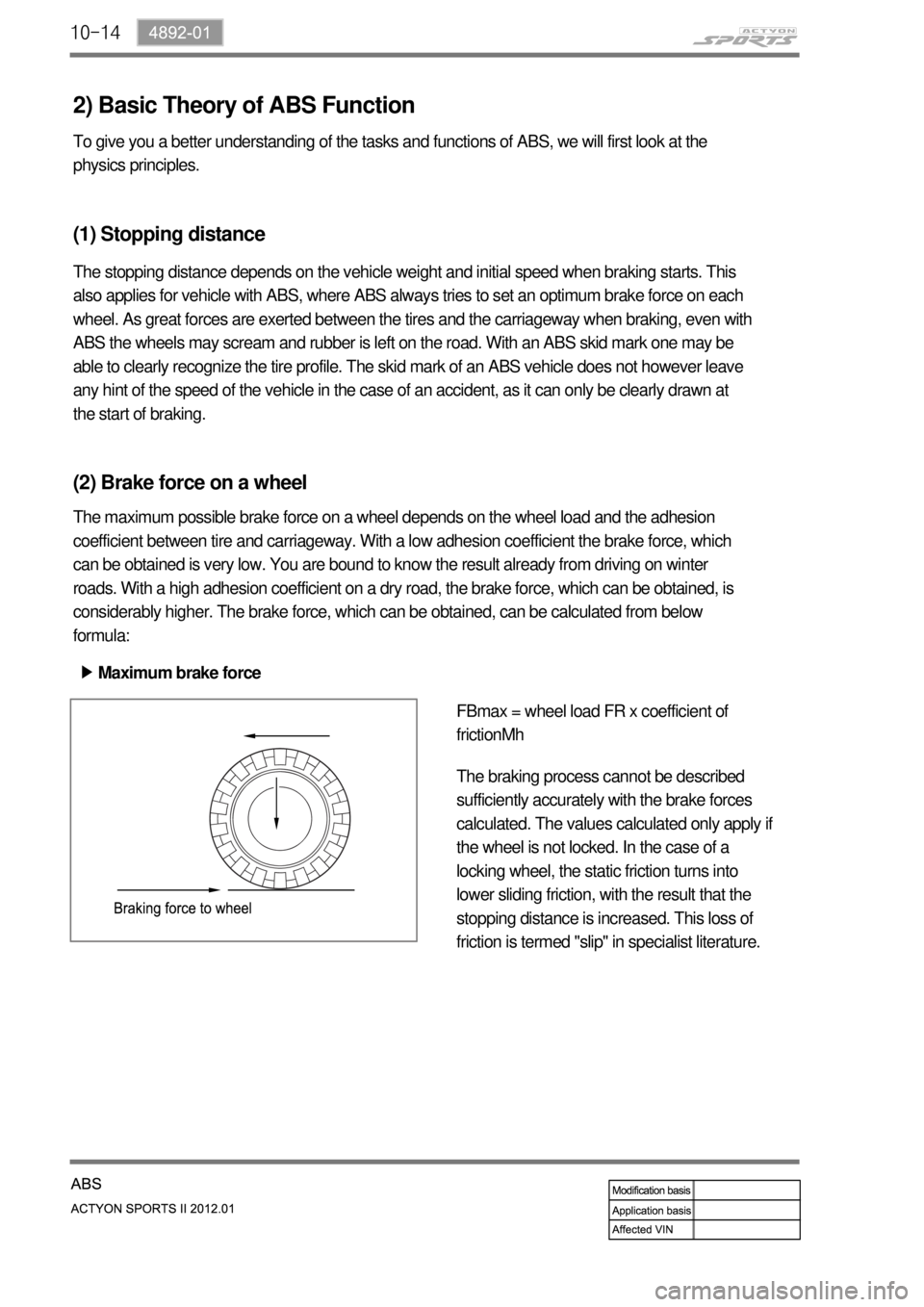Page 662 of 828
09-14
Specified value (B)155mm
Push rod
Stop lamp
switch Pedal Height ▶
Check the pedal height with below
procedures: -
Start the engine and measure the length
(A) between floor mat and pedal.
If the measured value is out of the
specified value, adjust the length. 1.
2.
Adjust the pedal height with below
procedures: -
Disconnect the stop lamp switch connector.
Unscrew the lock nut and remove the stop
lamp switch assembly.
Loosen the lock nut on the pedal push rod.
Turn the pedal push rod to adjust the pedal
height.
Tighten the lock nut.
Install the stop lamp switch assembly.
Connect the stop lamp switch connector.
Check if the stop lamps come on when
pressing the brake pedal around 5 mm.
If the stop lamp dpes not come on, adjust
the stop lamp switch assembly again.
If the stop lamps come on, tighten the lock
nut and measure the pedal height again. 1.
2.
3.
4.
5.
6.
7.
8.
9.
10.
Page 664 of 828
09-16
Let the engine run for 1 to 2 minutes and
stop it. If the brake pedal stroke is
shortened as pumping the brake pedal,
the system is normal. If not, the system is
defective.
Depress the brake pedal several times
with engine off. If the brake goes down
when starting engine with pedal
depressed, the system is normal. If not,
the system is defective.
Depress the brake pedal when the engine
is running. If the pedal height is not
changed for 30 seconds after stopping
the engine, the system is normal. If not,
the system is defective. 1.
2.
3.
If the above three checks are OK, the system
is normal. If any condition is not met, check
the valve, vacuum hose and brake booster. Brake Booster ▶
Page 693 of 828

10-14
2) Basic Theory of ABS Function
To give you a better understanding of the tasks and functions of ABS, we will first look at the
physics principles.
(1) Stopping distance
(2) Brake force on a wheel
The maximum possible brake force on a wheel depends on the wheel load and the adhesion
coefficient between tire and carriageway. With a low adhesion coefficient the brake force, which
can be obtained is very low. You are bound to know the result already from driving on winter
roads. With a high adhesion coefficient on a dry road, the brake force, which can be obtained, is
considerably higher. The brake force, which can be obtained, can be calculated from below
formula:
Maximum brake force ▶
FBmax = wheel load FR x coefficient of
frictionMh
The braking process cannot be described
sufficiently accurately with the brake forces
calculated. The values calculated only apply if
the wheel is not locked. In the case of a
locking wheel, the static friction turns into
lower sliding friction, with the result that the
stopping distance is increased. This loss of
friction is termed "slip" in specialist literature.
The stopping distance depends on the vehicle weight and initial speed when braking starts. This
also applies for vehicle with ABS, where ABS always tries to set an optimum brake force on each
wheel. As great forces are exerted between the tires and the carriageway when braking, even with
ABS the wheels may scream and rubber is left on the road. With an ABS skid mark one may be
able to clearly recognize the tire profile. The skid mark of an ABS vehicle does not however leave
any hint of the speed of the vehicle in the case of an accident, as it can only be clearly drawn at
the start of braking.
Page:
< prev 1-8 9-16 17-24